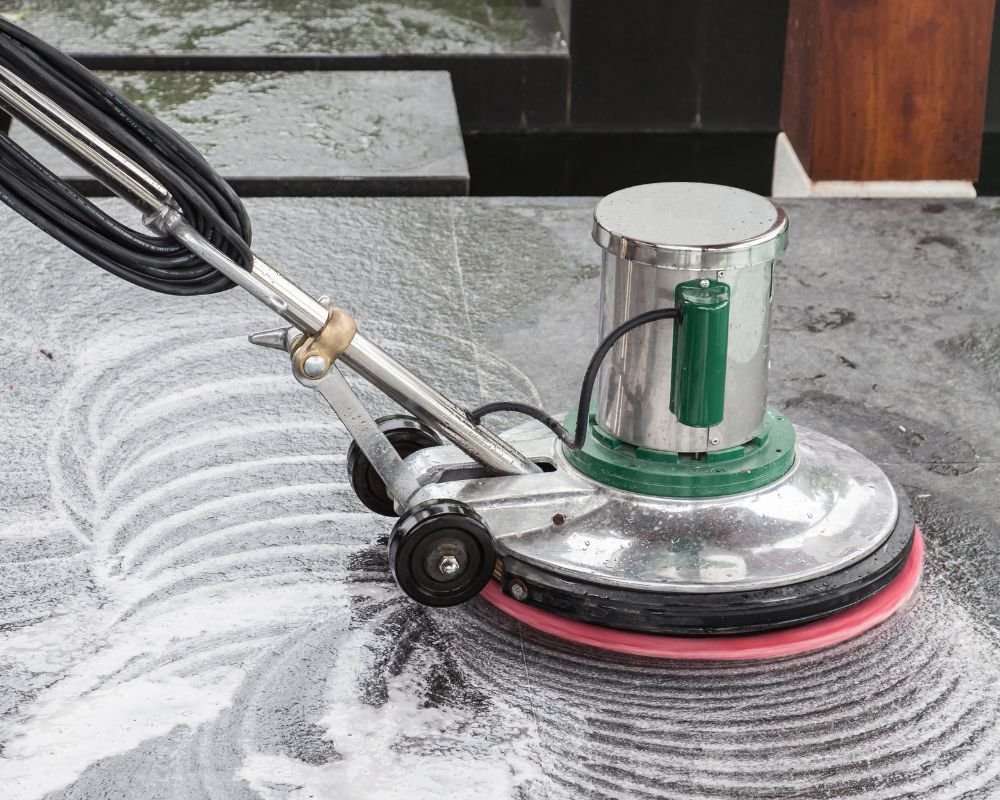Concrete floors are the norm in commercial and industrial environments. But even in some office buildings, bare concrete is preferred over other flooring materials for its durability and ease of maintenance. When it comes to cleaning concrete floors, things appear to be pretty straightforward. But are they really?
Cleaning concrete floors is not difficult if you know what you are doing. Any competent commercial or industrial cleaning provider should be able to manage concrete floors without issue. As for in-house janitorial teams, they can do an equally good job with the right knowledge.
Speaking of knowledge, here are five lesser-known tips for cleaning concrete floors:
1. Use a PH-Neutral Cleaning Solution
Despite concrete’s reputation as a durable flooring material, it is sensitive to cleaning products. This is why manufacturers design cleaning solutions specifically for concrete. Those solutions tend to be PH-neutral. That’s what you need for cleaning concrete without damaging it as you go.
But acidic and alkaline cleaners do a number on concrete. You won’t notice much damage after one or two cleanings, but you will notice it in the long term. Acidic cleaners are especially troublesome because they can actually etch concrete. Over time, the surface becomes uneven and discolored.
2. Repair Before You Clean
We routinely come across concrete floors with large cracks and other noticeable damage. Unfortunately, the damage is often exacerbated by repeated cleanings that are done without repairing the damage first. We recommend avoiding that.
Concrete is a porous material. Cracks and chips allow water in, water that can expand and contract with temperature changes. The end result is more damage. By cleaning floors without repairing them first, you are potentially making the damage worse.
3. Don’t Forget the Degreaser
A properly sealed concrete floor is pretty resilient against stains. However, there is one exception: oil-based stains. For this reason, it is a good idea to hit the floor with a degreaser before starting the cleaning process. Degreasers should take out most oil-based stains. You may have to apply a little elbow grease, though.
4. Consider Your Mop Head Carefully
Just as your choice of cleaning solutions is important, so is your choice of mop heads. These days, microfiber mops are pretty popular because they attract dirt and dust more efficiently. But microfiber mops may not be the best choice for industrial or manufacturing environments.
An old-fashioned cotton mop head works well on any floor as long as it is used correctly. For starters, the mop head should be clean. That doesn’t mean it has to be new. It just means that it was cleaned and dried after the last few years.
An appropriate mopping technique begins with choosing an area of the floor and soaking it. Let the water and cleaning solution sit for a minute or so to loosen stubborn dirt. Rinse the mop head, wring it out (but leave it damp), and then soak up all the liquid and dirt. Be sure to rinse and wring the mop frequently.
5. Consider Applying a Sealer
A clean concrete floor will stay clean for longer if it is protected by a sealer. So after the fact, consider whether the floor needs to be resealed. A high-quality sealer should last quite a while, mitigating the need to apply a new one layer after each and every cleaning.
That just about wraps up our concrete floor cleaning tips. Of course, there are finer details time and space would not allow us to address. The main point here is that there are right and wrong ways to clean concrete. Do it right and it will show.


